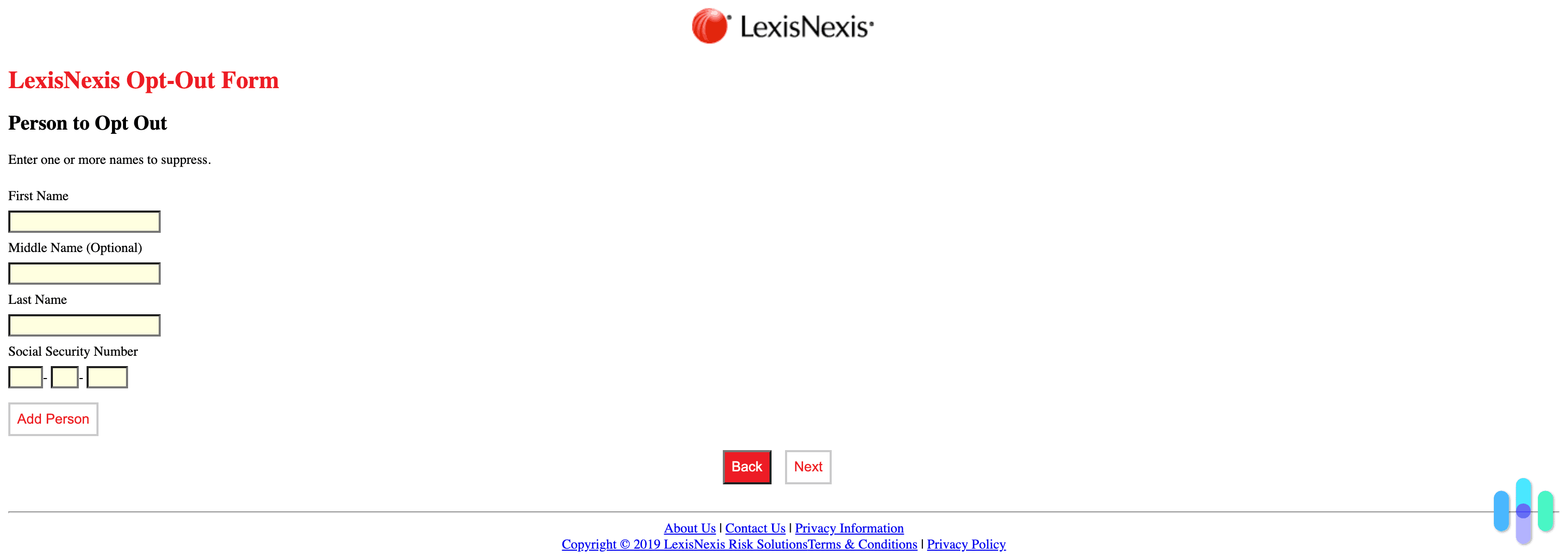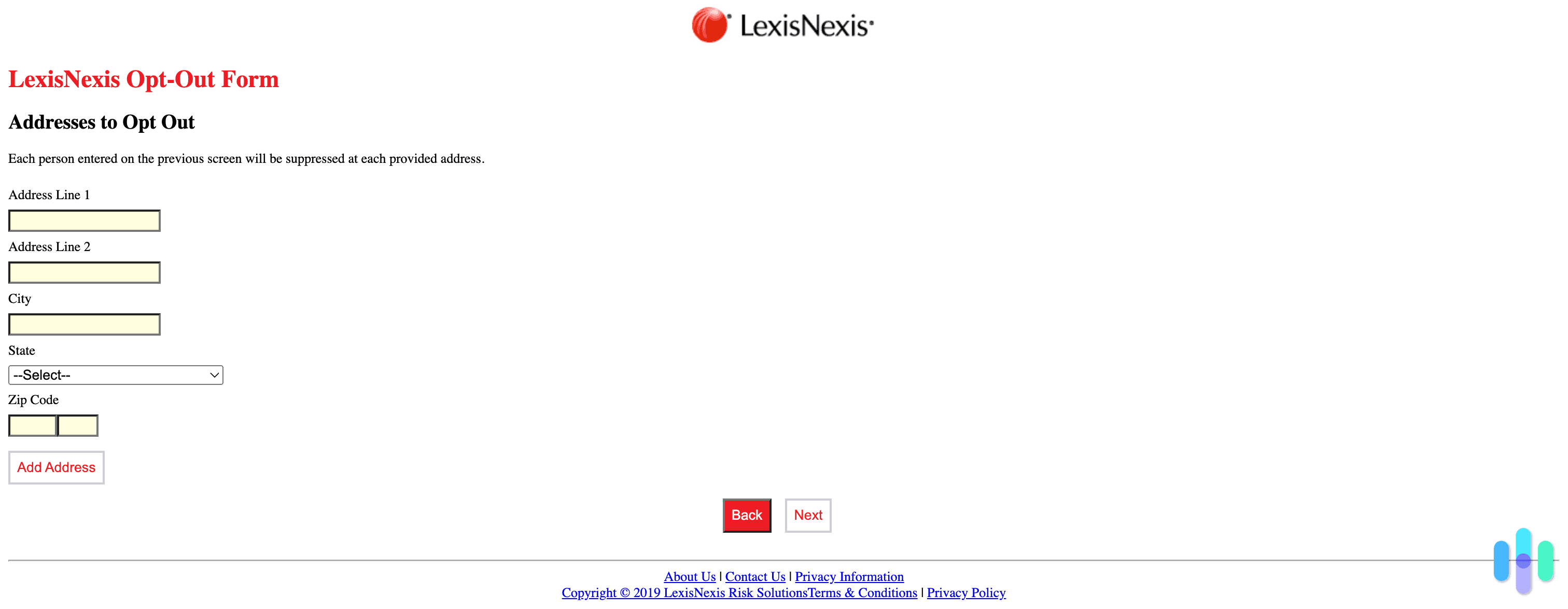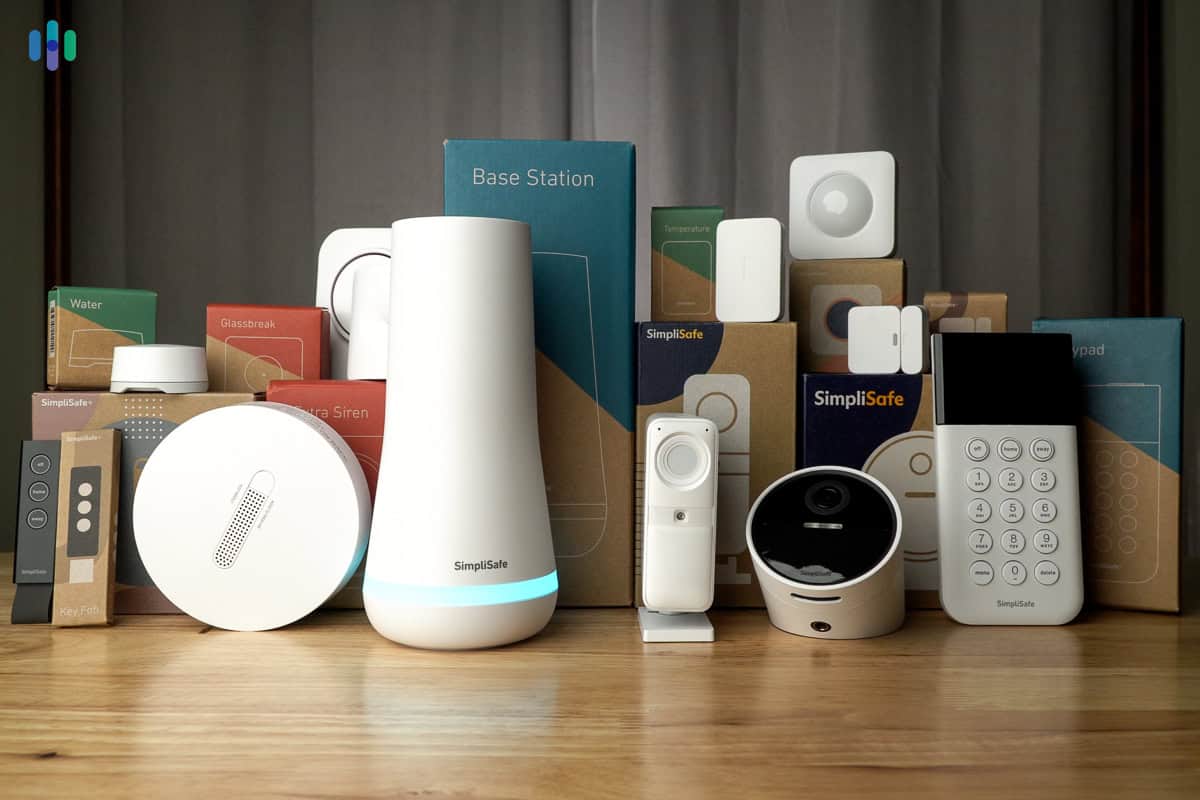The LexisNexis opt-out process can be an intimidating and challenging one to get through. Even just finding the official page to opt out can be tricky, which makes the entire procedure tricky from the start. However, we went through the LexisNexis opt out process to find the simplest solution for you. In this article, we’ll guide you through the basics of LexisNexis, how and why it collects your information, and how you can opt out of getting your data collected. Let’s get started.
What Is LexisNexis?
LexisNexis is a global company that provides legal, business, and regulatory information to law enforcement, government, and risk and law management agencies. Basically, it’s one of the largest databases with legal records and public information in the world.
The data stored and collected by LexisNexis is vast and extensive. Most of this information is gathered using public records, proprietary data sources, real estate transactions, bankruptcy records, public addresses, and essentially anything that is on the internet and isn’t password protected.
Pro Tip: Protect yourself from data brokers by using Surfshark’s Incogni. It will quite literally delete your data from databases for you. Read our Surfshark review to learn more.
Incogni is the best way to opt out of LexisNexis. It can remove your sensitive info with a few clicks of a button.

How Do I Opt Out of LexisNexis?
Now, you may be wondering if it’s possible to keep your information from being collected, and if so, how on earth do you begin the process? This is a great question, especially when the possibility of identity theft is on the horizon when your personally identifiable information or other details are public.
Before we get into it, we want to preface that removing your data from LexisNexis isn’t a walk in the park like deleting personal information is with Google, but it is entirely possible. You also have to meet certain requirements and possibly provide documentation.
To make it easier on you, we went through different LexisNexis opt-out methods so that we could offer you the most efficient solutions on how to do it yourself. We found two of the best ways to opt out of LexisNexis: using a data removal site or service and doing it manually on the official LexisNexis website. We’ll walk you through both, and even include our favorite data removal service to use for this.
>> Next Steps: Five Easy Opt-Outs to Protect Your Identity and Privacy Online
How to Remove Your Data Manually from LexisNexis
If subscribing to a paid service feels like too much, we encourage you to give this manual version a shot. We also did this ourselves, and while it took some time, we didn’t find the process to be overwhelming. If you’re curious, we did this using a Chrome browser on a Mac, but the process should be the same on any browser or computer.
- Go to the LexisNexis opt-out page by clicking our link or using this URL: https://optout.lexisnexis.com/. Once you’re there, click “Next.”

- Read the instructions on the next page carefully. Once you fully understand the directions, click “Next” again.

- Choose the reason that best describes why you want to opt out of LexisNexis.

For most, selecting “I do not want my information shared” is enough. However, there are special circumstances in which you might want to choose another option. Keep in mind that you might need to submit documents in support of other reasons. Either way, select the option that best aligns with your intentions and then click “Next” again.
- Fill out your information and then click “Next” when you’re done.

We suggest filling out only your full name and leaving your Social Security Number out of it. This information is incredibly sensitive and should rarely be shared. Leaving it out will not affect this process.
If you want to remove the data collected from another person you live with, click “Add person.” If not, just click “Next.”
- Enter your current address information.

You can add as many addresses as you want, but it’s not necessary to add every single one you’ve ever lived at. Once you’re done, you guessed it, click “next.”
- Fill out your contact information.

We suggest making sure you add current contact information so you get updates sent directly to you. When you’re done, click “Confirm.”
- Save your confirmation number.

If LexisNexis contacts you, it may need your confirmation number to release any details on this.
Did You Know? Using a VPN is another great way to keep your data private and off databases. Read our VPN comparison guide to find the best option for you. And check out our roundup of the best VPNs available.
Use Data Removal Sites and Services to Opt Out of LexisNexis
One of our favorite ways to opt out of LexisNexis is to use a data removal service. These services will request the removal of everything from your phone number to your address from various data broker databases — so, LexisNexis and other similar sites. Essentially, they submit the request to opt out for you, so you don’t have to worry about it. We also like that they do this for multiple databases and not just LexisNexis, considering there are hundreds of other data brokers.
>> Learn More: What is a Data Broker?
Keep in mind that some of these services don’t guarantee quick results or even that your information will be completely removed. However, we still like going this route because of the convenience. So, if you’re looking to opt out of LexisNexis and other databases in fewer steps, we suggest this option. If you’re not sure what service to use, check out our favorite data removal services.
Use Incogni to Opt Out of LexisNexis
Incogni by Surfshark is a great way to kick off the LexisNexis opt-out process. Incogni is a service created by Surfshark that takes the steps out of removing your information from data broker hubs. In fact, it actually requests the removal of your data from more than 180 broker sites. It works on a subscription basis and consistently takes action against data broker sites on your behalf.
Pro Tip: To save money, bundle Incogni with a VPN. Both services will help you keep yourself anonymous online. Currently, Incogni is available as add-ons to either Surfshark or NordVPN subscriptions.
What Happens Once I Opt Out of LexisNexis?
As we mentioned earlier, LexisNexis is not the only data broker out there. There are hundreds of others collecting your data on a consistent basis. They will typically sell and trade the data between each other and to other businesses and entities. So, if you want to make sure you are the most protected, you may want to consider opting out of all these data brokers. While that might sound incredibly time-consuming and like a big job, data removal services, like Kanary, make this process a whole lot easier.
Basically, once you request to opt out of LexisNexis, you can expect some of your information to be deleted from its system. However, according to the data analytics company, it does keep public records that are available to law enforcement officials.
>> Up Next: Learn How to Opt Out of Radaris
Why Should You Opt Out of LexisNexis?
There are multiple reasons why you may want to consider opting out of LexisNexis, ranging from just wanting privacy online to preventing identity theft. When so much information is easily accessible online, it makes it incredibly easy to become a scam victim or to lose privacy. So, if you have concerns about your privacy, data security, spam, scams, and identity theft, we suggest deleting your data from LexisNexis. This simple step helps you take back control of your own information and decrease online exposure.
Pro Tip: Removing your information from data broker databases is a great start to prevent identity theft. Read our identity theft protection guide to stay ahead of the game.
Recap: How to Opt Out of LexisNexis
You can start the LexisNexis opt out process by either using a data removal service like DeleteMe or by manually doing it yourself. There are pros and cons to both. To recap, a data removal service is a great choice if you don’t mind subscribing and paying a monthly fee. Keep in mind that this route also removes your data from hundreds of other databases.
On the other hand, you can opt out of LexisNexis for free on your own by following our instructions above. It’s a simple seven-step process that we found to be very beginner-friendly. The only downside to this is that your data can still be found on multiple other databases. It’s definitely possible to manually remove yourself from these other data broker sites, but it will be a tricky and long process.
Regardless of which option you go with, opting out of any data broker database is an excellent way to take back control of your information and minimize your online exposure.
FAQ
-
Is opting out the same as freezing on LexisNexis?
No, opting out and freezing your information on LexisNexis are not the same. Opting out means you request the removal of your information from the LexisNexis database. Freezing means placing a security freeze through a credit agency. A freeze also doesn’t directly impact data broker databases, but it can prevent unauthorized access to your credit information.
-
What information does LexisNexis collect?
LexisNexis collects a range of information from multiple sources. Some of the more common data it collects includes identity information, contact details, financial records, employment and education history, property records, legal records, marriage licenses, social media activity, and public records.
-
Why should I opt out of LexisNexis?
There are multiple reasons why you might want to opt out of LexisNexis. A few common reasons individuals opt out include concerns about data security, identity theft, spam, scammers, and your personal information being accessible online.
-
Does LexisNexis have the right to sell my data?
Yes. LexisNexis and other data brokers have the right to collect, use, trade, share, and sell your information. Like other data brokers, they typically operate within privacy laws that often do not prevent any of this from happening. However, it’s important to note that privacy laws will vary depending on your region.
-
Can LexisNexis add my information again, even after I opt out?
Unfortunately, opting out of LexisNexis does not guarantee that it will not add your data back to its databases. It is possible for it and any other data broker to reacquire your information regardless of how many times you opt out. The best way to prevent this is by subscribing to a monthly data removal service that consistently works to remove your data from these databases.






